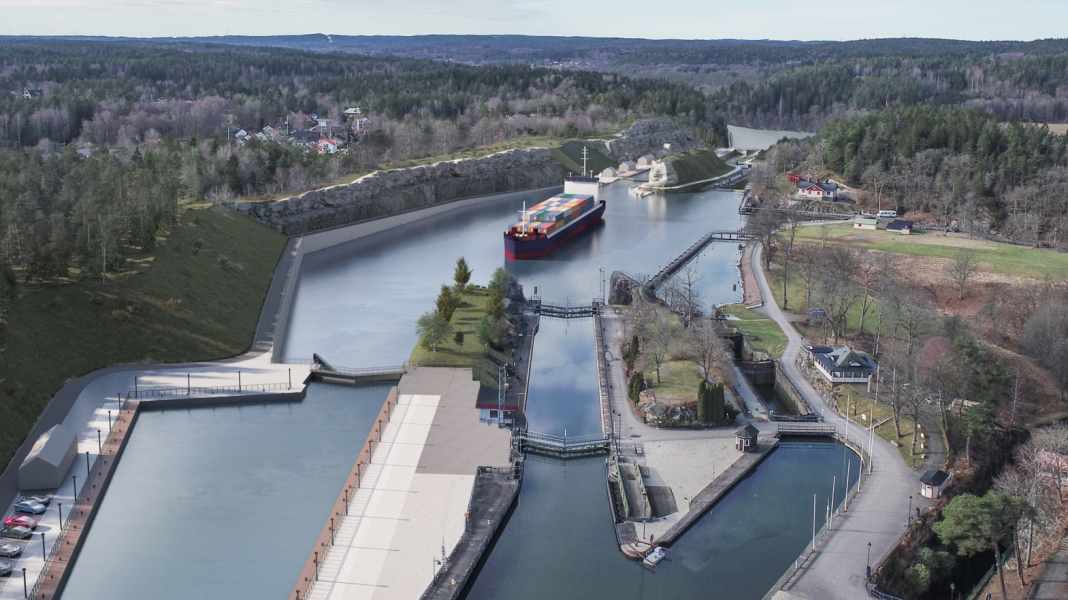Multi-million euro project in Sweden: New large locks for the Trollhätte Canal
Jill Grigoleit
· 01.07.2024

The huge construction project, which is intended to secure the future of shipping on Lake Vänern, is estimated to cost 6.1 billion Swedish kronor (around 500 million euros). Around half of this will be spent on the construction of the new lock stairs near Trollhättan alone. One million cubic metres of soil and rock will have to be excavated for the 2.3-kilometre-long new connection between the existing canal at Olidebron in the east and the Göta älv in the west, and some houses will have to make way.
The new route would also pass through a nature reserve. The environmental assessment processes are currently underway, with construction scheduled to begin in 2027 and commissioning expected between 2030 and 2032. The 82-kilometre-long Trollhätte Canal forms the western section of the 390-kilometre-long navigable waterway across Sweden known to many as the "Göta Canal". The canal connects the Kattegat near Gothenburg with the Vänern inland, Sweden's largest lake.
The challenge of the Trollhätte Canal
As early as 1800, eleven kilometres of locks and bypass channels were built here. The greatest difficulties were caused by the rapids at Trollhättan, where the Göta älv has a drop of 32 metres. The first locks were considered the "eighth wonder of the world" at the time. Over the course of time, new, larger locks had to be built several times. Three generations from 1800, 1832 and 1916 have been preserved to this day.
As the locks currently in use on the Trollhätte Canal no longer meet the growing demands of a modern shipping industry, they now need to be upgraded. Shipping traffic in Lake Vänern has increased significantly in recent years and is expected to increase by a further 2.5 per cent per year by 2040. The current "Vänermax dimension" is based on the usable size of the current lock chambers. Currently, only ships up to 87 metres in length can use the shipping lane.
Larger locks for larger ships
The new locks will measure 125 x 18 metres, so that ships up to 110 metres long and 16 metres wide will be able to pass through. The maximum draught will remain unchanged. This would allow the same amount of goods to be transported with fewer ships. This will make transport more energy-efficient, more cost-effective and safer, according to the maritime coordinator of the Swedish Transport AdministrationBjörn Garberg.
In addition, the concrete in the old locks is in such a poor condition that it can no longer be maintained. Conversion within the existing lock routes would lead to closures lasting several years, which would not only have an impact on freight transport, but also on leisure boating. The investment would not pay off if industry and tourism had to switch to other transport routes in the meantime and might not return. The road and rail network would be overloaded for years.
The goal: more goods transport on the water
Shifting freight transport to shipping is a central component of the Swedish government's national freight transport strategy. Shipping plays a crucial role here in the efforts to achieve a sustainable transport sector in the long term. There are also 90-degree bends on the existing routes that are impossible for today's ships to navigate. The old mountain canal is to be widened and straightened by five to ten metres on the sections between the Olidbrücke and Klaffbronbrücke bridges and at the Felskanal. The old locks are considered national monuments that should be preserved in order to develop them as a cultural and historical destination.
